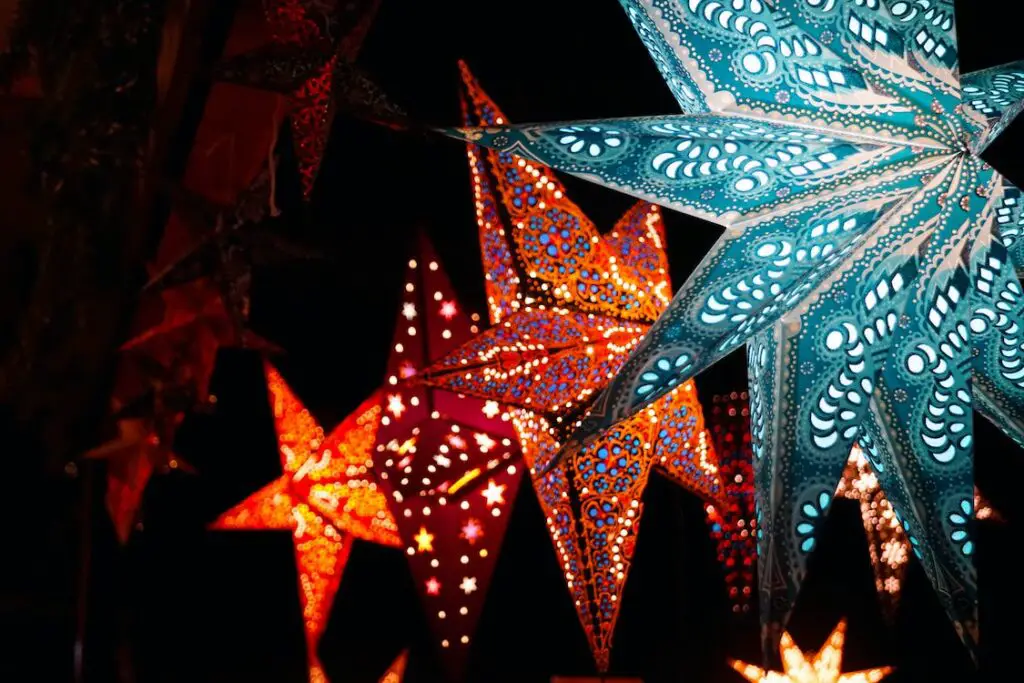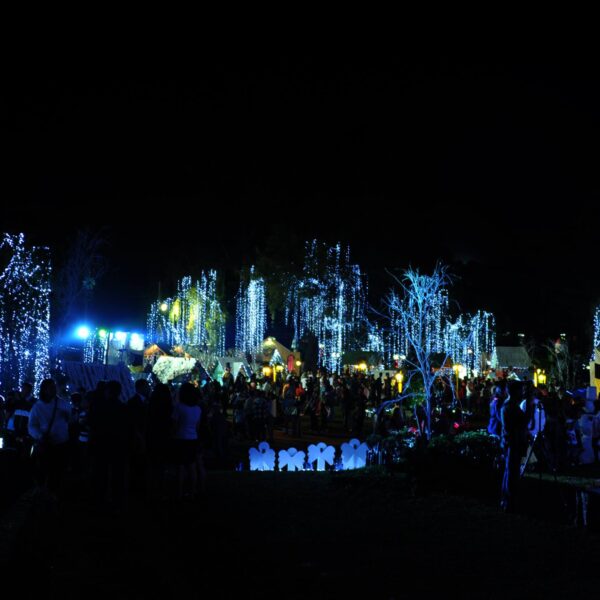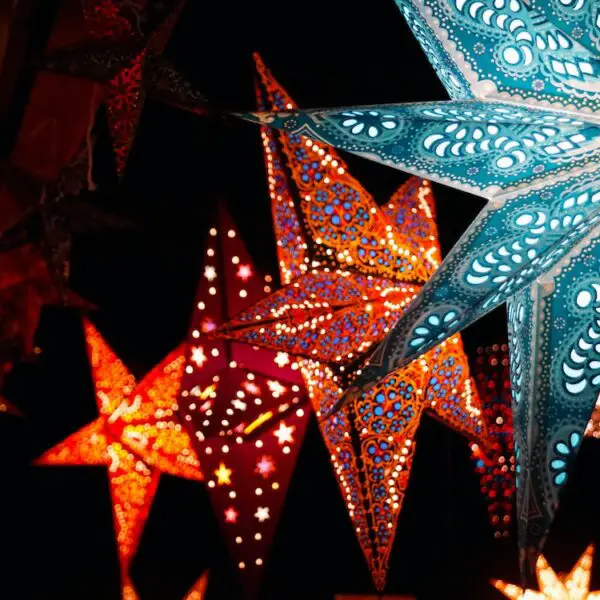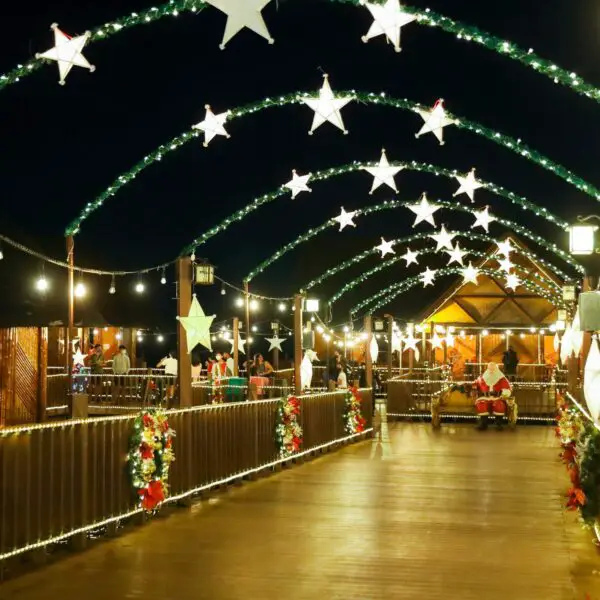Introduction
Welcome to the enchanting world of Christmas in the Philippines, where the holiday season is not just a day, but a month-long extravaganza filled with joy, warmth, and an unparalleled spirit of celebration. As soon as September arrives, Filipinos’ hearts are set ablaze with excitement for the upcoming Christmas festivities. With its deeply-rooted traditions and unique cultural influences, Christmas in the Philippines is truly a sight to behold.
A Festive Filipino Fiesta
The Philippines takes pride in celebrating one of the longest Christmas seasons worldwide. From September to January, streets are adorned with colorful lights and decorations while cheerful carols fill the air. This extended celebration showcases how central Christmas is to Filipino culture.
Moreover, Christmas in this archipelago nation goes beyond religious observance; it’s an opportunity for families and communities to come together and create lasting memories. The spirit of giving permeates every corner of society during this time as acts of generosity and kindness become more prevalent than ever.
The Warmth in Filipino Hearts
One cannot overstate the importance of family in Filipino culture—Christmas further magnifies this value. Families gather from far and wide, reconnecting under one roof to celebrate Noche Buena (Christmas Eve) together.
In addition to family bonding, Filipinos also embrace their strong sense of community during this season. Neighbors unite through street parties known as “paskuhan” where everyone shares food, laughter, and stories late into the night.
The Joyful Simbang Gabi Tradition
A beloved tradition unique to the Philippines is Simbang Gabi or “Night Masses.” For nine consecutive days leading up to Christmas Eve (starting from December 16), devout Catholics wake up early before dawn for these special masses. Simbang Gabi serves as a spiritual preparation for the birth of Jesus and is a testament to the strong Catholic influence in the country. Attending these masses is seen as a way to honor tradition, seek blessings, and deepen one’s faith.
The Significance of Countdown
The countdown to Christmas holds immense significance in the hearts of Filipinos. It represents an anticipation that transcends mere dates on a calendar.
The countdown symbolizes hope, joy, and renewed beginnings. As the days pass by, excitement builds up among both young and old alike.
Streets are adorned with vibrant lights while shopping centers brim with festive decorations. The countdown serves as a reminder that something extraordinary is about to happen—the birth of Jesus Christ and the celebration of love, peace, and goodwill toward all.
So join us on this magical journey as we unravel the wonders of celebrating Christmas in the Philippines! Discover rich traditions, indulge in mouth-watering delicacies, immerse yourself in joyful festivities, and make unforgettable memories that will last a lifetime.
Historical Background
Influence of Spanish colonization on Filipino Christmas traditions
When it comes to Christmas celebrations in the Philippines, it is impossible to ignore the profound influence of Spanish colonization. The Spaniards, who arrived in the archipelago in the 16th century, brought with them their own traditions and customs. They introduced Christianity to the predominantly pagan Philippines, and this had a significant impact on how Filipinos celebrated Christmas.
One of the most prominent Spanish influences on Filipino Christmas traditions is the Simbang Gabi or Misa de Gallo – a series of nine dawn masses held before Christmas Day. This practice originated from Spain’s tradition of “Misa del Gallo” or “Rooster’s Mass,” which symbolized waiting for Christ’s birth.
Today, attending these early morning masses has become an essential part of Filipino Christmas rituals. Additionally, the Spanish introduced the concept of a Nativity scene or Belen in Filipino households and churches.
The Belen represents the birth of Jesus Christ and typically includes figurines depicting Mary, Joseph, baby Jesus, angels, shepherds, and the Three Wise Men. It serves as a visual reminder of the true meaning behind Christmas and is often displayed as a centerpiece during festive gatherings.
Evolution of Christmas celebrations over the years
Over time, Filipino Christmas celebrations have evolved beyond just religious observances. While faith remains at its core, modern-day festivities have integrated various cultural elements that reflect both local traditions and global influences. In recent years, there has been a noticeable shift towards more elaborate decorations and vibrant light displays during the Christmas season – reminiscent of Western holiday aesthetics.
This evolution can be attributed to increased exposure to international media and tourism as well as changing tastes among Filipinos. Moreover, there has been an expansion in terms of popular holiday activities such as gift-giving exchanges among family members and friends known as “Monito-Monita” or “Kris Kringle.” This practice adds a fun and exciting element to the season as individuals anonymously give presents to their assigned recipients.
Furthermore, the commercial aspect of Christmas has become more pronounced in the Philippines. Shopping malls transform into winter wonderlands adorned with dazzling decorations, while retailers offer special promotions and sales.
The influence of Western consumer culture has played a significant role in shaping this aspect of Filipino Christmas celebrations. Spanish colonization left an indelible mark on Filipino Christmas traditions, introducing religious practices such as Simbang Gabi and the Belen.
However, as time passed, these traditions evolved to incorporate both local customs and global influences. From solemn religious observances to festive gift exchanges and elaborate decorations, Filipino Christmas celebrations have become a unique fusion of faith, culture, and modernity.
Preparations and Decorations
Traditional Parol (Lantern) Making and Significance
When it comes to Christmas preparations in the Philippines, one cannot overlook the importance of the parol. The parol, a star-shaped lantern, is a quintessential symbol of the Filipino Christmas spirit. It represents the Star of Bethlehem that guided the Three Wise Men to baby Jesus.
Making parols is not just an activity; it’s an art form passed down through generations. Filipinos take pride in creating intricate and beautiful parols using various materials like bamboo sticks, colored cellophane, and strings of lights.
The process starts with constructing a sturdy frame using bamboo or wire. Then comes the delicate task of meticulously cutting and gluing colorful cellophane to create stunning patterns on each point of the star.
Adorning it with twinkling lights brings the parol to life. The significance of parols extends beyond their aesthetic appeal.
They symbolize hope, unity, and joy during Christmastime. Many communities organize parol-making contests where participants showcase their creativity through vibrant designs and innovative techniques.
Unique Filipino Christmas Tree Decorations
In addition to parols, Filipinos have a unique way of decorating Christmas trees that sets them apart from other cultures. While traditional ornaments like baubles and tinsel are still used, there are two distinct Filipino decorations that add an authentic touch: belen and capiz shell ornaments. Belen (Nativity Scene)
No Filipino home is complete without a belen during Christmas. Belens depict the birth scene of Jesus Christ in Bethlehem with figurines representing Mary, Joseph, baby Jesus in a manger, shepherds, angels, animals—everything that encompasses that magical night more than 2000 years ago.
These nativity scenes come in various sizes, from miniature versions that fit on mantelpieces to life-sized installations displayed in churches and public areas. Families take great care in arranging the figures and often add some local Filipino elements, such as miniature palm trees or a bahay kubo (nipa hut), to incorporate their cultural heritage into the scene. Capiz Shell Ornaments
Another distinct Filipino Christmas tree decoration is the use of capiz shell ornaments. Capiz shells are translucent and resemble delicate pieces of mother-of-pearl. These shells are skillfully crafted into beautiful star-shaped ornaments, angels, and other intricate designs that catch the light and create a mesmerizing effect on the tree.
Filipinos love incorporating capiz shell ornaments not only on their Christmas trees but also as window decorations or hanging mobiles. The natural shimmer of these handcrafted ornaments adds an ethereal touch to any festive setting.
With traditional parols illuminating the night sky and unique decorations like belens and capiz shell ornaments adorning Christmas trees, Filipinos truly know how to create a visually stunning atmosphere during the holiday season. These preparations reflect their deep-rooted faith, creativity, and dedication to celebrating Christmas joyfully.
Traditional Filipino Christmas Delicacies
The Irresistible Lechon: A Roast Pig Extravaganza
When it comes to the centerpiece of a Filipino Christmas feast, nothing beats the mouthwatering lechon. This succulent roast pig is a true showstopper that will make your taste buds dance with joy. The preparation itself is an art form, involving marinating the pig in a flavorful mixture of herbs and spices before slow-roasting it over an open fire.
The result? A crispy golden skin that encases tender, juicy meat with flavors that will leave you craving for more.
Bibingka and Puto Bumbong: Rice Cakes to Warm Your Soul
No Filipino Christmas celebration is complete without these beloved rice cakes. Bibingka, a soft and fluffy cake made from rice flour and coconut milk, is traditionally cooked in clay pots lined with banana leaves.
It is then topped with butter or margarine, grated coconut, and salted duck eggs for an explosion of flavors. Puto bumbong, on the other hand, is a purple-colored sticky rice cake steamed in bamboo tubes.
Served hot off the steamer, it is smothered with butter or margarine and sprinkled with freshly grated coconut and muscovado sugar. The combination of its unique texture and sweet-salty taste will transport you straight to foodie heaven.
Fruit Salad with Buko: A Tropical Twist on Christmas Dessert
Escape from the winter chill and indulge in a refreshing fruit salad with buko (young coconut). This delightful dessert combines chunks of tropical fruits such as pineapple, papaya, mangoes, and bananas with young coconut strips bathed in sweetened cream or condensed milk. Each spoonful offers a burst of fruity freshness that perfectly complements the richness of the Christmas feast.
Popular Holiday Drinks in the Philippines
Salabat: Warming Hearts with Ginger Tea
As the cool breeze embraces the holiday season, Filipinos turn to a warm cup of salabat for comfort. Salabat is a soothing ginger tea that not only warms you from within but also has numerous health benefits. Made by boiling fresh ginger slices in water and sweetening it with honey or sugar, this aromatic beverage is known for its ability to soothe sore throats, aid digestion, and provide an invigorating boost during the festive season.
Tsokolate de Batirol: Savoring Tradition in Every Sip
Step into a world of ancient indulgence with tsokolate de batirol. This traditional hot chocolate will transport you back to a time when cacao beans were ground manually using a wooden whisk called “batidor” and mixed with hot water or milk.
The result is a thick, rich drink that carries hints of nostalgia and tradition. You can enhance your tsokolate de batirol experience by pairing it with suman (sticky rice rolls) or dipping freshly baked pandesal (bread rolls) into its velvety goodness.
So there you have it! Traditional Filipino Christmas delicacies that will take your taste buds on an unforgettable journey.
From the glorious lechon to the comforting salabat and nostalgic tsokolate de batirol, these culinary treasures are essential elements of any Filipino Christmas celebration. Indulge in these delights, feel the warmth they bring, and let them become part of your cherished holiday memories in the Philippines!
Simbang Gabi (Night Masses)
The Spiritual Journey of Nine Consecutive Dawn Masses
The crisp early morning air fills with a sense of anticipation as the Philippines embraces the cherished tradition of Simbang Gabi, or Night Masses, leading up to Christmas. This spiritual journey involves attending nine consecutive dawn masses before Christmas Day.
Beyond its religious significance, this age-old tradition is deeply ingrained in Filipino culture, symbolizing unity and devotion among communities. The act of attending Simbang Gabi is believed to bring blessings and grant the devout faithful’s wishes.
As the sky gradually transitions from darkness to a soft palette of pinks and oranges, church bells ring out, summoning believers to gather for these early morning services. Attending all nine masses demonstrates dedication and commitment to one’s faith, serving as a testament to the resilience of Filipino Catholics.
A Hearty Breakfast After Spiritual Reflection
After engaging in heartfelt prayers during Simbang Gabi, Filipinos reward themselves with a traditional breakfast filled with delectable delights. The tantalizing aroma wafting through the air entices both churchgoers and passersby alike. Alongside vendors eagerly awaiting hungry customers outside churches are two classic treats that steal the spotlight: puto bumbong and bibingka.
Puto bumbong is a purple rice delicacy steamed in bamboo tubes lined with banana leaves. It boasts a unique flavor profile heightened by a generous slathering of butter, grated coconut called “niyog,” and muscovado sugar on top.
The result is an explosion of taste that satisfies sweet cravings while providing comfort on chilly mornings. Bibingka, on the other hand, is a warm rice cake made with galapong (rice flour) mixed with coconut milk for added richness.
Cooked over hot coals in clay pots lined with banana leaves, this fragrant delicacy is topped with a slice of salted egg and grated cheese. Each bite offers a delightful medley of textures and flavors that evoke the spirit of Christmas.
An Iconic Scene Outside Churches
Outside churches during Simbang Gabi, one can witness a unique sight: vendors bustling around makeshift stalls showcasing stacks of puto bumbong and bibingka. The warm glow emanating from traditional clay ovens lures hungry churchgoers with its irresistible allure.
The rhythmic sounds of coconut shells grating niyog create a symphony that adds to the festive atmosphere. As the faithful emerge from the mass, their senses are immediately enticed by the mouthwatering treats on display.
People queue up eagerly, exchanging stories and laughter as they patiently wait for their turn to indulge in these culinary delights. This shared experience fosters a sense of community, strengthening bonds among neighbors and strangers alike.
The vendors themselves embody both skill and expertise, having perfected their craft over generations. Their hands move swiftly, expertly preparing each serving with meticulous care.
As they hand over plates filled with steaming hot puto bumbong or bibingka wrapped in banana leaves, smiles light up faces while taste buds awaken to the heavenly flavors that these humble treats offer. Simbang Gabi not only holds spiritual significance but also serves as an opportunity for Filipinos to come together in celebration.
Attending nine consecutive dawn masses demonstrates devotion and faithfulness while indulging in traditional breakfast treats like puto bumbong and bibingka creates moments of joy and connection outside churches throughout the country. As Christmas draws nearer with each passing day during this countdown period, Simbang Gabi breathes life into Filipino traditions, spreading warmth and unity among communities far and wide.
Festivities and Traditions
A. Noche Buena: The Grand Feast on Christmas Eve
When it comes to celebrating Christmas in the Philippines, the highlight of the season is undoubtedly Noche Buena. This grand feast, held on Christmas Eve, brings families together in a joyous celebration of love, food, and togetherness. As the clock strikes midnight, homes across the archipelago come alive with laughter and cheer.
1. Traditional Dishes Served During Noche BuenaNo Filipino Noche Buena would be complete without a mouthwatering array of traditional dishes that reflect our rich culinary heritage. One beloved staple is lechon, a succulent roast pig with crispy skin and tender meat that leaves everyone licking their fingers in delight. Another favorite is hamonado, a sweet glazed ham that practically melts in your mouth. But it doesn’t stop there! Filipino families take great pride in preparing an assortment of festive dishes like pancit (noodles), embutido (meatloaf), and relleno (stuffed chicken or fish). And let’s not forget the classic bibingka and puto bumbong – these aromatic rice cakes are cooked using traditional methods and are typically enjoyed hot off the grill.
2. Family Reunions and Exchange of GiftsNoche Buena is also a time for Filipinos scattered near and far to come home for heartwarming family reunions. Loved ones gather around a lavishly decorated table filled with delectable dishes, creating memories that will be cherished for years to come. In addition to indulging in delicious food, exchanging gifts plays a significant role during this festive evening. In many Filipino households, presents are placed under a beautifully adorned Christmas tree or near the Belen – depicting the nativity scene – symbolizing the sharing of love and blessings.
B. Misa de Gallo: Midnight Mass on Christmas Eve
As the stars twinkle in the night sky, Filipinos flock to churches across the country for Misa de Gallo, a cherished Christmas tradition that holds deep religious significance. This midnight mass is a moment of reflection and devotion, marking the birth of Jesus Christ. Attending Misa de Gallo is a testament to the strong Catholic faith deeply ingrained in Filipino culture. Churches are adorned with vibrant decorations and illuminated by candlelight, creating an ambiance of solemnity and reverence. The sound of familiar Christmas carols fills the air as believers come together to worship and give thanks. The tradition originated from Spain’s influence during colonization but has evolved uniquely in the Philippines over time. Devotees brave the early morning hours and gather with their loved ones for nine consecutive days leading up to Christmas Day – a testament to their unwavering faith. Noche Buena and Misa de Gallo hold special places in Filipino hearts during the countdown to Christmas. These traditions bring families closer together while honoring both our cultural heritage and religious devotion. So gather your loved ones around a bountiful feast, exchange gifts with joy, and embrace the spirit of unity as you attend this midnight mass – for these are truly the moments that make Philippine Christmases unforgettable experiences filled with love, faith, and celebration.

Conclusion
As the countdown to Christmas approaches, the Philippines comes alive with a myriad of traditions and festivities. From vibrant parols adorning homes and streets to sumptuous feasts during Noche Buena, every aspect of Filipino Christmas celebrations is infused with warmth, love, and a deep sense of community. Regional celebrations such as Pampanga’s Giant Lantern Festival in San Fernando City exemplify the rich cultural heritage that permeates throughout the country.
These events not only showcase artistic talents but also serve as a reminder of the unity and joy that come with the holiday season. So, whether you find yourself marveling at the intricate craftsmanship of a giant lantern or savoring traditional Filipino delicacies like lechon and bibingka, immerse yourself in this unique experience.
Embrace the spirit of Christmas as it unfolds in all its glory in the Philippines—the land where celebrations are infused with passion, creativity, and an unwavering sense of togetherness. May your holiday season be filled with love, laughter, and unforgettable moments shared with loved ones.
Related Posts
-
Experience the Magic at Baguio BCC Christmas Village 2023

Immerse yourself in the enchanting holiday spirit at Baguio BCC Christmas Village 2023, located in the beautiful city of Baguio in the Philippines. This annual event, organized by Baguio Country…
-
Countdown to Christmas: Your Ultimate Guide to Celebrate in the Philippines 2023

Discover the vibrant traditions and festivities of a Filipino Christmas as we guide you through the countdown to this joyous season in the Philippines.
-
Affordable Christmas Gift Ideas for Adults

Discover affordable Christmas gift ideas for adults. From personalized mugs to DIY spa kits, find practical options that won’t break the bank.
-
Travel tips for Christmas in the Philippines

Discover the enchanting Philippines during Christmas with this detailed travel guide. Immerse in local traditions, explore festive destinations and make unforgettable memories.
-
Experience Christmas & New Year in Manila’s Best Hotels

Discover Manila’s top luxury hotels for a magical Christmas and New Year celebration. Unforgettable experiences await at these exquisite accommodations.
-
Best Hotels In Cebu for Unforgettable Christmas and New Year Celebrations

Discover the finest hotels in Cebu for an enchanting Christmas and New Year celebration. Immerse yourself in luxury, charm, and festive joy.
-
The Enchanting Ipon Bundle by Chinkee Tan: A Perfect Christmas Gift for Personal and Financial Growth

Discover the ultimate Christmas gift: the IPON Bundle by Chinkee Tan. Books and an IPON box to help you save, manage debt, and build wealth.
-
Christmas By The Lake Taguig Quick Online Registration Here

Online registration for Christmas by the Lake Taguig is now available. Begin preparations early, reserve your spot and make plans to have a wonderful time this holiday season. Celebrate Christmas…
